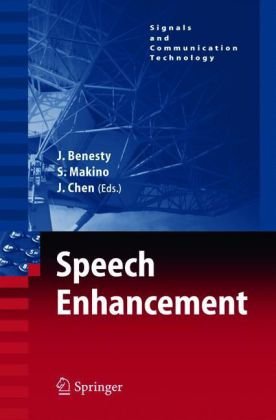

Most ebook files are in PDF format, so you can easily read them using various software such as Foxit Reader or directly on the Google Chrome browser.
Some ebook files are released by publishers in other formats such as .awz, .mobi, .epub, .fb2, etc. You may need to install specific software to read these formats on mobile/PC, such as Calibre.
Please read the tutorial at this link: https://ebookbell.com/faq
We offer FREE conversion to the popular formats you request; however, this may take some time. Therefore, right after payment, please email us, and we will try to provide the service as quickly as possible.
For some exceptional file formats or broken links (if any), please refrain from opening any disputes. Instead, email us first, and we will try to assist within a maximum of 6 hours.
EbookBell Team

5.0
20 reviews
ISBN 10: 354024039X
ISBN 13: 9783540240396
Author: Jacob Benesty, Shoji Makino, Jingdong Chen
We live in a noisy world! In all applications (telecommunications, hands-free communications, recording, human-machine interfaces, etc.) that require at least one microphone, the signal of interest is usually contaminated by noise and reverberation. As a result, the microphone signal has to be "cleaned" with digital signal processing tools before it is played out, transmitted, or stored.
This book is about speech enhancement. Different well-known and state-of-the-art methods for noise reduction, with one or multiple microphones, are discussed. By speech enhancement, we mean not only noise reduction but also dereverberation and separation of independent signals. These topics are also covered in this book. However, the general emphasis is on noise reduction because of the large number of applications that can benefit from this technology.
The goal of this book is to provide a strong reference for researchers, engineers, and graduate students who are interested in the problem of signal and speech enhancement. To do so, we invited well-known experts to contribute chapters covering the state of the art in this focused field.
Front Matter
Introduction
Study of the Wiener Filter for Noise Reduction
Statistical Methods for the Enhancement of Noisy Speech
Single- and Multi-Microphone Spectral Amplitude Estimation Using a Super-Gaussian Speech Model
From Volatility Modeling of Financial Time-Series to Stochastic Modeling and Enhancement of Speech Signals
Single-Microphone Noise Suppression for 3G Handsets Based on Weighted Noise Estimation
Signal Subspace Techniques for Speech Enhancement
Speech Enhancement: Application of the Kalman Filter in the Estimate-Maximize (EM) Framework
Speech Distortion Weighted Multichannel Wiener Filtering Techniques for Noise Reduction
Adaptive Microphone Array Employing Spatial Quadratic Soft Constraints and Spectral Shaping
Single-Microphone Blind Dereverberation
Separation and Dereverberation of Speech Signals with Multiple Microphones
Frequency-Domain Blind Source Separation
Subband Based Blind Source Separation
Real-Time Blind Source Separation for Moving Speech Signals
Separation of Speech by Computational Auditory Scene Analysis
Back Matter
apple tv speech enhancement
sonos arc ultra speech enhancement
an investigation of incorporating mamba for speech enhancement
speech enhancement sonos arc
speech enhancement ai
Tags: Jacob Benesty, Shoji Makino, Jingdong Chen, Speech, Enhancement